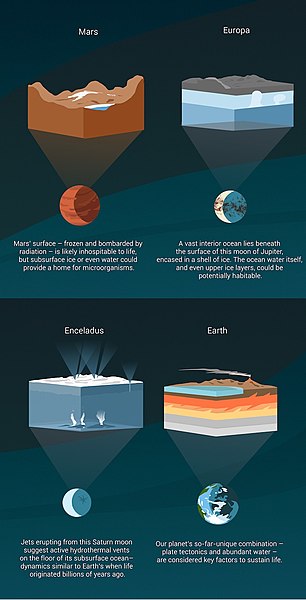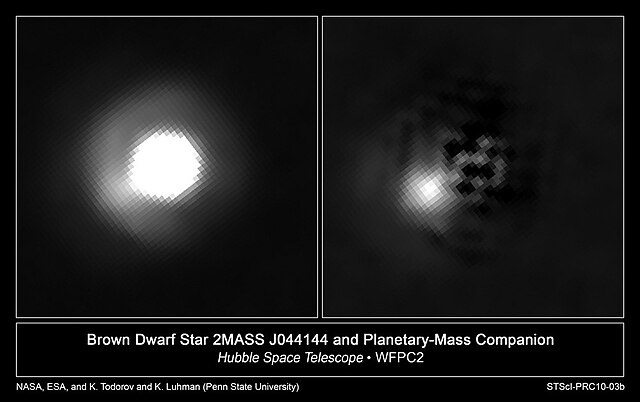Extraterrestrial life, alien life, or colloquially simply aliens is life which does not originate from Earth. No extraterrestrial life has yet been conclusively detected. Such life might range from simple forms such as prokaryotes to intelligent beings, possibly bringing forth civilizations that might be far more advanced than humanity. The Drake equation speculates about the existence of sapient life elsewhere in the universe. The science of extraterrestrial life is known as astrobiology.
Besides Earth, Mars, Europa and Enceladus are the most likely places in the Solar System to find life.
Lifeforms produce a variety of biosignatures that may be detectable by telescopes.
The Green Bank Telescope is one of the radio telescopes used by the Breakthrough Listen project to search for alien communications.
Artist's impression of Gliese 581 c, the first terrestrial extrasolar planet discovered within its star's habitable zone
An exoplanet or extrasolar planet is a planet outside the Solar System. The first possible evidence of an exoplanet was noted in 1917 but was not then recognized as such. The first confirmation of the detection occurred in 1992. A different planet, first detected in 1988, was confirmed in 2003. As of 1 May 2024, there are 5,662 confirmed exoplanets in 4,169 planetary systems, with 896 systems having more than one planet. The James Webb Space Telescope (JWST) is expected to discover more exoplanets, and to give more insight into their traits, such as their composition, environmental conditions, and potential for life.
Exoplanet HIP 65426b is the first discovered planet around star HIP 65426.
The three known planets of the star HR8799, as imaged by the Hale Telescope. The light from the central star was blanked out by a vector vortex coronagraph.
2MASS J044144 is a brown dwarf with a companion about 5–10 times the mass of Jupiter. It is not clear whether this companion object is a sub-brown dwarf or a planet.
Coronagraphic image of AB Pictoris showing a companion (bottom left), which is either a brown dwarf or a massive planet. The data were obtained on 16 March 2003 with NACO on the VLT, using a 1.4 arcsec occulting mask on top of AB Pictoris.








